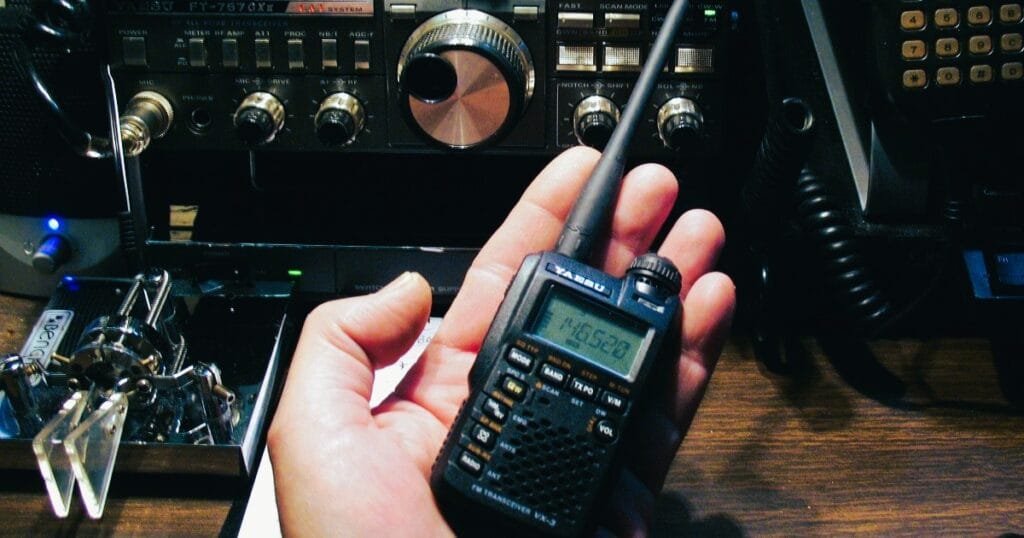Table of Contents
ToggleCan Others Hear My Walkie-Talkie Conversations? Privacy Codes for Safer Communication
Have you ever been conversing on a walkie-talkie, perhaps discussing critical plans for your next hiking trip or simply coordinating with buddies, and then thought, “Can others hear my conversation?” The brief response is: Yes, they can. A nifty feature of the walkie-talkies was its design around open radio frequencies, which means that anyone with a similar device tuned in to the same channel could literally eavesdrop on your conversation. However, there is hope; so do not panic just yet! We want to talk about how walkie-talkie communication works, the privacy code features that are on some models, potential risks and what you can do in order not for someone listening so stay tuned. We look at simple walkie-talkie communication in contra-distinction to the more elaborate ham radio system and cover some of the basics casual as well professional users may need on privacy codes for securing your talks.
The Open Nature of Walkie-Talkie Channels
This may be during camping vacations, events or just when you are out in the great outdoors with friends. Walkie-talkies operate on public airwaves that have not been privatized and are available to use by any member of the public for free provided they keep their content within bounds suitable for general audiences as set forth publicly from time-to-time. This means that anyone else with a similar device on the same frequency will be able to listen in on your conversation. While cellular phones use encrypted signals which are designed to remain private, walkie talkies have been created for open communication on a certain band of frequency.
This openness has both pluses and minuses. On the one hand it is very useful to discuss within groups. Conversely, anyone within the range using the same frequency might be able to listen to what you are saying. So, someone else listening? to my radio conversations? Maybe, it depends on the circumstances and what communication system you are using.
Are walkie-talkie channels universal? What do you think? Click here to find out the answer.
How Walkie-Talkie Frequencies Work

Walkie-talkies usually work in two bands- Family Radio Service (FRS) and General Mobile Radio Service (GMRS). These two bands are extremely open, one device on these frequencies can connect to any other within the same channel. This is similar to how ham radios work on shared frequencies, but in a ham radio review amateur radio operators will see that there are more tools available for keeping amateur radio communications private and secure.
Click here to learn more about radio frequencies and radio waves.
Comparing Walkie-Talkies and Ham Radios
When it comes to radio communication, ham radios are the best option for enthusiasts looking for more control, variety, and communication capacity than other radio devices since they have a far larger frequency range and considerably more advanced capabilities. In a typical ham radio review, you’ll discover that amateur radio operators have more control over their equipment, including access to encryption tools and privacy features that aren’t accessible on most commercial walkie-talkies. This makes ham radios suitable for people looking for more secure communication, although walkie-talkies are still popular among casual users owing to their ease.
Click here to gain a clear understanding of the differences between walkie-talkies and ham radios.
Why Can Others Listen In? Here's Why Privacy Codes Matter
Because most walkie-talkie devices use unencrypted, shared frequencies, outsiders can listen in on your discussions. This open architecture facilitates group cooperation but does not emphasize privacy. Unlike mobile phones, which encrypt conversations and data, walkie-talkies were never designed with secrecy in mind.
In ham radio reviews, privacy is frequently mentioned in terms of signal encryption and the employment of special sub-audible tones or privacy codes (CTCSS). However, it is crucial to remember that, while CTCSS can minimize interference from others, it does not prevent someone from tuning in if they know the correct frequency and code.
Can You Stop Others from Listening?

Now that you know others may listen in, what can you do? While you can’t keep your walkie-talkie discussions fully secret, there are a few techniques to limit who may listen in. Here are a few good strategies:
1. Use Privacy Codes (CTCSS/DCS)
Most modern walkie-talkies use privacy codes (also called CTCSS or DCS) to reduce interference and provide a better level of privacy. These codes are more like passcodes that cause your radio to ignore any communication not using the same code.
How Privacy Codes Work
A CTCSS or DCS code locks your walkie-talkies so they will only respond to other devices with the same code. Although, this does not prevent someone hearing you if they were listening on the same channel with and entered in your code but could reduce that chance of a listener falling onto your conversation!
This technique is highly acknowledged in ham radio reviews as an effective tool for reducing interference, although it is not to be mistaken with genuine encryption. It’s similar to using a password to block out unnecessary speech, but it isn’t infallible.
Need more details about privacy codes? Stay calm. Just click here to learn how two-way privacy codes work and the key differences between CTCSS and DCS.
2. Switch Channels Frequently to Avoid Privacy Codes
Another simple way to keep some anonymity is to switch channels often. Most walkie-talkies have numerous channels to pick from, and switching channels frequently might make it difficult for someone to understand your communication.
In other cases, you may even utilize two separate channels for back-and-forth communication, with you and your companion switching to a new frequency after each broadcast. While this will not eliminate dedicated eavesdroppers, it may make it more difficult for casual listeners to keep up.
3. Limit Sensitive Conversations
Communications of a more secure nature should be left off walkie-talkies entirely, sometimes that is the easiest way to insulate your privacy…avoid having intimate or sensitive conversations over the phone, in case someone is eavesdropping.
Walkie talkies are great for coordinating events and directing people or sending short messages too but not conducive of having private talks. These ports are also useful for basic communication tools such as ham radios that have to be easy-to-use rather than secure.
4. Consider Encrypted Radios
If privacy is a high issue for you, consider investing in radios that support encrypted transmission. These devices are commonly used by professionals, such as law enforcement or security teams, to guarantee that only authorized devices may decode and hear the communications being broadcast.
Encrypted radios are often more costly and require more technical knowledge to use, but they offer greater privacy than regular walkie-talkies. In ham radio reviews, you’ll frequently find comments about the finest encrypted radio solutions for individuals seeking more secure communication channels.
The Reality of Walkie-Talkie Privacy
It is critical to recognize that walkie-talkies are not designed to be used for private discussion. Whether you’re trekking in the woods, organizing an event, or communicating with pals, anybody within range might possibly listen in on your chat. However, for most casual users, this is a minor issue.
How Often Do Others Actually Listen?
The fact of the matter is that nearly everyone using a set of walkie talkies would rather not listen in on other people’s private conversation anyway. They talk with their smartphones too much chances are no-one specific is tuning in to your chatter (unless you go near a regular frequency while in an area like mine).
At venues or in cities, there could be more walkie-talkies around and the likelihood of shared channels. In such cases, using privacy codes or switching channels frequently can help.
Final Thoughts: Who's Really Listening?
Using walkie-talkies implies that you’re conversing across shared airways. Anyone with the appropriate equipment and frequency may listen in. While this may create privacy worries, the majority of users will not face any substantial difficulties, especially if they take basic safeguards.
In our ham radio review, we discovered that, while walkie-talkies and ham radios have certain similarities, ham radios have more extensive options for managing communication and preserving privacy. Simple techniques like privacy codes and channel switching provide adequate protection for everyday usage, but individuals seeking more secure solutions may explore encrypted radios or ham radios with additional capabilities.
Takeaways:
- Privacy Codes (CTCSS/DCS) can help filter out undesirable signals, but cannot ensure perfect privacy.
- Switching channels frequently can make it harder for someone to follow your conversation.
- Limit sensitive conversations over walkie-talkies if you’re concerned about privacy.
- Encrypted radios provide a higher level of security but are usually more expensive and complex to use.
So, can people overhear your walkie talkie conversations? Yes, they can, but with a few easy precautions, you can decrease the possibility of eavesdropping. Now, should they take the time to think about what they say or are the dangers of using walkie-talkies more sensational than the enjoyment and usefulness of using them while going out for a hike or while talking with friends? Well, don’t say things that you do not want to be overheard and relish the convenience that these technologies have to offer.
And after all, who would really want to know about your dinner plans anyway?
In this article, we also discussed ham radio reviews to offer a more comprehensive knowledge of how different communication technologies compare, particularly in terms of privacy and security. Whether you remain with walkie-talkies or venture deeper into the realm of ham radios, recognizing each device’s strengths and limits is critical to getting the most of your communication experience. strengths and limitations of each device is key to making the most of your communication experience.


